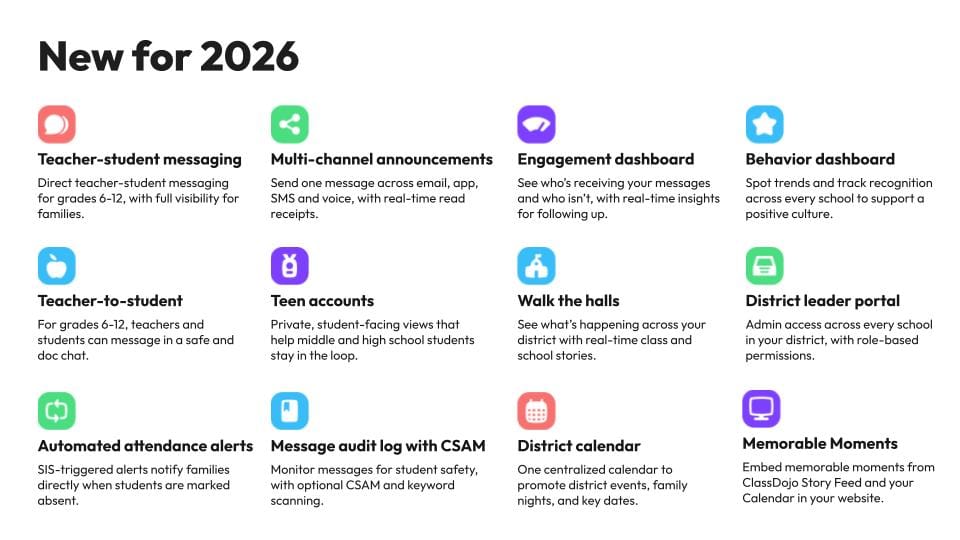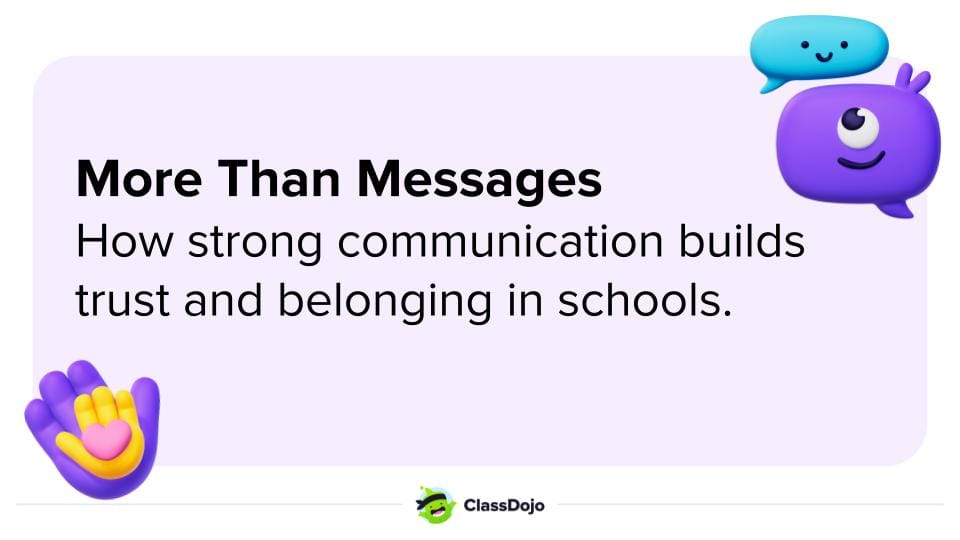In today’s education landscape, technology is often positioned as the solution to communication challenges. But as Chad A. Stevens, Ph.D., Head of K–12 Engagement at ClassDojo, reminds us, technology is just a tool—it’s the people behind it that make the difference.
With years of experience as a teacher, principal, and chief technology officer, Chad has seen how effective communication can transform schools. From fostering trust to balancing security and accessibility, the key to strong school-home connections isn’t just about what tools schools use, but how they use them.
Technology is a tool, not a solution
Many school districts fall into the trap of thinking that adopting a new platform will instantly fix their communication struggles. However, Dr. Stevens emphasizes that no tool, no matter how advanced, can replace human relationships.
“You can have the most effective communication tool in the world,” Stevens explains, “but if the person on the other end doesn’t feel safe, doesn’t know how to use it, or doesn’t have a relationship with a teacher, it doesn’t matter if it’s an email or a face-to-face meeting—it’s not going to be effective.”
The best communication strategies start with trust and connection. Once those relationships are in place, technology can enhance and streamline interactions, making communication more accessible, efficient, and engaging for all stakeholders.
Balancing accessibility and security
One of the biggest challenges districts face is balancing easy access to communication tools with strong data security measures. Schools store a lot of sensitive information, including student records and family contact details, making them prime targets for cyberattacks.
Dr. Stevens highlights a critical shift in mindset: It’s not a matter of if a cyberattack will happen, but when.
With the rise of ransomware threats, schools must take a proactive approach to cybersecurity by implementing strong security protocols and regularly reviewing their digital communication strategies. However, Stevens warns against an overcorrection that limits accessibility. “Often, the things that get adopted the fastest are the ones schools tend to block first,” he says. Instead of blocking tools outright, schools should assess them thoughtfully, balancing ease of use with necessary protections.
Scaling communication without losing the human touch
As schools grow, so do their communication needs. The assumption is that technology alone can scale communication, but Dr. Stevens emphasizes that the real challenge often comes from the human element—training, adoption, and consistency in messaging.
Scaling communication isn’t just about choosing the right tool. It’s about making sure everyone—teachers, administrators, and families—knows how to use it effectively. The most successful districts focus on strategic implementation, ensuring that tools support relationships, rather than replace them.
The future of school communities: tech-enabled, relationship-driven
Looking ahead, Stevens envisions a future where technology plays a key role in expanding learning communities beyond the classroom. With digital platforms enabling real-time communication, students, families, and teachers can stay connected in ways never before possible. But no matter how tech-enabled education becomes, one thing remains the same: relationships matter most.
“The most successful approaches will integrate families, teachers, and students in ways that create environments where students feel safe and that they belong, whether that happens face-to-face or through digital interfaces,” Dr. Stevens says.
As schools continue to navigate the evolving landscape of education technology, the key to success will be a balance of embracing innovation while keeping human connection at the heart of communication.











